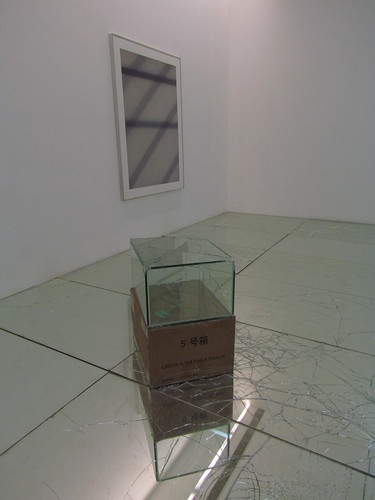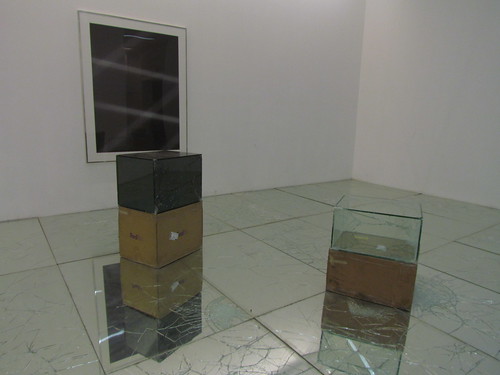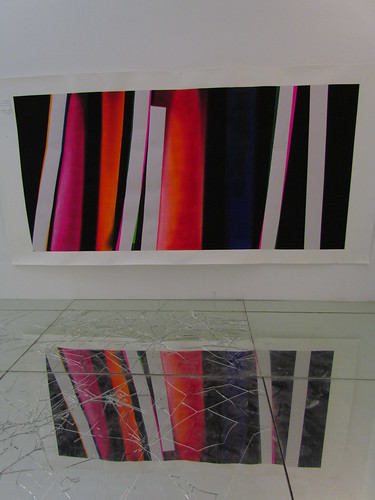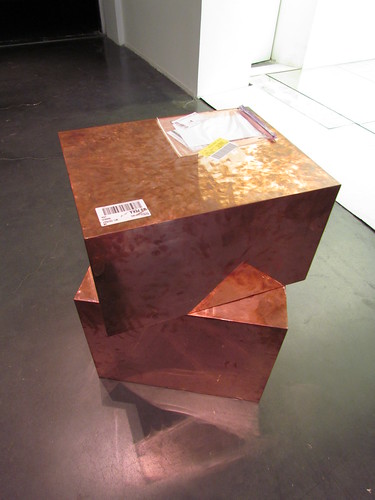Walead Beshty
24.9.-20.11.11
Ullens Center for Contemporary Art, Beijing
Installations
There are many important creative stages during the creation of an
artwork. The idea, the material, the production methods and the
presentation. But this is the first time I have seen the focus has been
on an ignored stage: the transport and handling between the studio and
the gallery.
WB got the idea when photographic
film was destroyed or transformed in the x-ray machine at an airport.
The impact the radiation had on the film made patterns and forms quite
unintended by the artist. From this he has developed several techniques
enchancing the performance from when an object leaves the artist's
studio until it reaches the gallery. This is usually a space-and-time
span where neither the artist or the gallery are in control.
WB
created glass sculptures perfectly fitting into the transport firm
FedEx standard boxes. During the handling and transport cracks appear,
making the sculpture look quite different. Brass boxes were sent without
no shell at all, thus receiving spots and marks from the carriers. On
the walls are pictures inspired by the films transformed by the x-ray
machines. Walking among these sculptures and pictures you need to thread
on mirrors loosely mounted on the floor. The viewers make the mirrors
crack, creating both a new pattern and sound.
It
may seem like the artist leaves the sculptures to coincidence, where
anything can happen. This is not the case. The artist is actually
controlling the process of how the artwork will be influenced. The glass
boxes are laminated, so that they keep their shape even when cracked.
The brass boxes were to be handled without gloves. And the viewers are
forced to walk on the mirror floor. The artist is forcing other
people to contribute to his artwork, whether it is through their work
tasks or through curiosity.
This could be a
tribute to both the transport firms and the viewers. But it could also
be a critical view on how they may influence strongly on artwork. There
will always be a risk that an artwork is destroyed during transport. And
the toll of many visitors may destroy artwork as well. But what is the value of art if it disappears or is destroyed in transport? Or if nobody see it?




